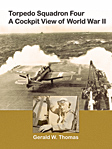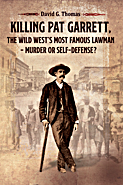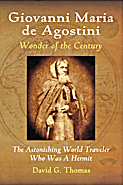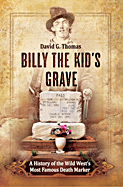|
|
||||||||||||||||||||||||
 |
||||||||||||||||||||||||
|
|
||||||||||||||||||||||||
|
||||||||||||||||||||||||
|
|
||||||||||||||||||||||||
 |
||||||||||||||||||||||||
 |
||||||||||||||||||||||||
 |
||||||||||||||||||||||||
|
|
||||||||||||||||||||||||
|
|||||||||||||||||
|
Electronics in VT-4 |
|||||||||||||||||
|
By Mason A. "M-A" Clark, VT-4 |
|||||||||||||||||
 |
|||||||||||||||||
|
Joseph Mason Clark and Mason A. Clark |
|||||||||||||||||
|
Grandpa Joseph Mason Clark, who I remember well, was severely wounded at the Battle of Mission Ridge, Tennessee. The Confederates were on the Ridge, the Union forces below, and Grandpa was shot in the top of his head. Between our years, were the Spanish-American War and World War I. I got into VT-4 because my childhood hero was Thomas Edison. I read every Edison book in the library of Hillary Clinton's home town, Park Ridge, Illinois. This led to being a radio amateur and studying electrical engineering at Northwestern University's Technological Institute. That study was interrupted by World War II. The Navy was recruiting radio amateurs and radio servicemen as radio technicians. We all had good backgrounds for the Navy. I spent three months at Texas A&M, which pretty well covered four years of electrical engineering (really!), then four months on Wade Island, Corpus Christi studying radar equipment. I was a top-of-the-class kind of student and taught radio at the Navy's Chicago schools for seven months. I then joined VT-4 in January 1944. VT-4 and the USS Ranger were my introduction to the "real" Navy. A ground-crewman's job is an off-and-on labor, checking the equipment between flights and fixing it when it burps. The radio stuff, built to pre-WWII designs, did have a habit of burping frequently. But my most ego-building experience was with new equipment that didn't work. One of our more reliable radios was a pre-war four-channel VHF system Western Electric had built for commercial airliners. It was replaced by a superior Collins Radio system with twelve channels and new transmitters in the towers. Our first experience with this equipment was at Hyannis, Massachusetts where the transmitter in the tower would not work. Technicians from everywhere, including men from the Collins Radio Cedar Rapids, Iowa plant, had not been able to make it work. My friend George Nash, who was the only aircraft-radio shop person, got me into the tower to fix the transmitter. I tracked down the copulation-based short-circuit in twenty minutes and we had VHF radio for the afternoon flight. What happened was that the upper chassis and the lower, power supply chassis each worked perfectly so no one had been able to fix it. The short was caused when the male power plug was inserted into the female socket on the power chassis. The act of insertion caused a short circuit easily prevented. For a moment I had genius rank because so many experts had failed. Most of the electronic technician's job ("electronic" was a new word invented by a magazine) was less interesting: if it's broke, replace it. On board ship, before active flying, I went over every plane with a checklist with the help of a ship's crewman assigned to me. This made it highly improbable that any pilot would find any problem with the radio gear on takeoff. There was one who did; he forgot to plug in his headset. I was embarrassed for him but don't remember who he was. A bigger problem was turret gunners using the radio transmitter dials as stepping stones--bad ergonomics. My flying hours, limited to peaceful anti-submarine patrols, etc., let me appreciate the work of the pilots and crewmen. Photo: Mason Clark aboard the USS Essex, 1944. I was with VT-4 until December 1945. At that time the air group was at Groton, Rhode Island and in a state of total personnel turmoil. We had spent some idyllic time at the Watsonville, California air field. Idyllic because Santa Cruz was nearby and this later brought me back to California. At Groton I met Mary Deacon on a blind date, courted her thirty-five days and we were married December 28, 1945, nine days after I left the Navy. She passed away in May 2000 after 54 years of our marriage. We spent five years at Northwestern University; I in electrical engineering and physics, Mary in the School of Speech. Our first son, Jim, was born there in 1948. Following were five years developing transistors at the Bell Telephone Laboratories in New Jersey (with Bill Shockley). One of my first transistor projects was a high-frequency power transistor capable of being the transmitter in a plane-down emergency beacon. Such beacons have become standard equipment. But California beckoned. Five years at a TRW subsidiary in Los Angeles and our second son, Tom; five years with Hewlett-Packard in Palo Alto -- all as manager of semiconductor (transistor) product development. An exciting time in the beginnings of the new technology, closed out as a sales manager for semiconductor equipment. Photo: Mason Clark in retirement. My interests in retirement are expressed on my internet site at where there are two books (a third on the way), and articles on political economics. A for-fun book, How to Win at Kensington, is out of print. Now I must try to educate the world about political economics--a daunting task for the retired Torpedo Squadron VT-4 Chief Electronic Technician Mate. |
|||||||||||||||||
|
Air Group 4 - "Casablanca to Tokyo" |
|||||||||||||||||
|
|
|||||||||||||||||